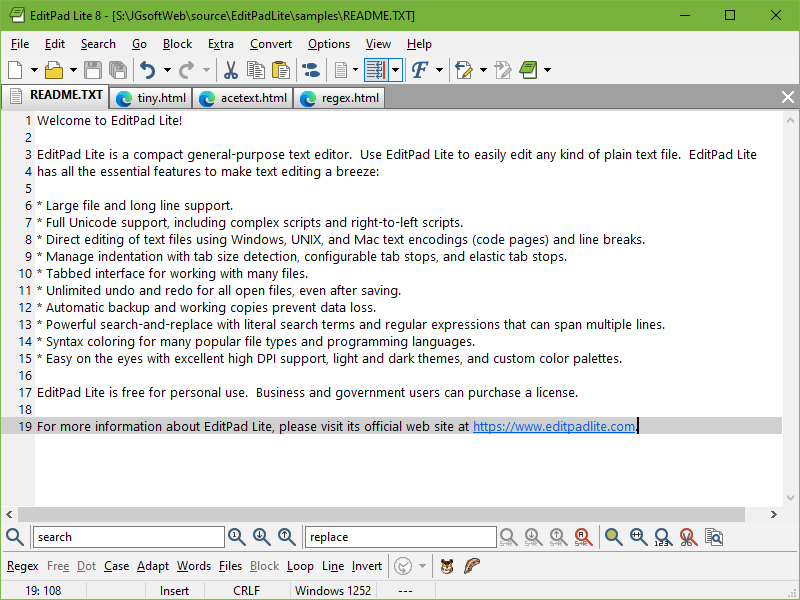
- Best plain text editor mac software#
- Best plain text editor mac code#
- Best plain text editor mac series#
- Best plain text editor mac windows#
Best plain text editor mac windows#
Microsoft Windows systems come with the simple Notepad, though many people-especially programmers-prefer other editors with more features. For example, Unix and Unix-like operating systems have the pico editor (or a variant), but many also include the vi and Emacs editors. Some text editors are small and simple, while others offer broad and complex functions. Gedit is a text editor shipped with GNOME Ī typical text editor uses a gap buffer, a linked list of lines (as in PaperClip), a piece table, or a rope, as its sequence data structure.

The desire for text editors that could more quickly insert text, delete text, and undo/redo previous edits led to the development of more complicated sequence data structures. While the former could be stored in a single long consecutive array of characters, The core data structure in a text editor is the one that manages the string (sequence of characters) or list of records that represents the current state of the file being edited. A full-screen editor's ease-of-use and speed (compared to the line-based editors) motivated many early purchases of video terminals.
Best plain text editor mac software#
Emacs, one of the first free and open source software projects, is another early full-screen or real-time editor, one that was ported to many systems.
Best plain text editor mac code#
Also written in the 1970s was the UCSD Pascal Screen Oriented Editor, which was optimized both for indented source code as well as general text. Written in the 1970s, it is still a standard editor on Unix and Linux operating systems.

Best plain text editor mac series#
One of the earliest full-screen editors was O26, which was written for the operator console of the CDC 6000 series computers in 1967. When computer terminals with video screens became available, screen-based text editors (sometimes called just "screen editors") became common. Some common line editors supported a "verify" mode in which change commands displayed the altered lines. Some line editors could be used by keypunch editing commands could be taken from a deck of cards and applied to a specified file. Line editors were major improvements over keypunching.

In some line editors, the cursor could be moved by commands that specified the line number in the file, text strings (context) for which to search, and eventually regular expressions. Edits were verified by typing a command to print a small section of the file, and periodically by printing the entire file. Commands (often a single keystroke) effected edits to a file at an imaginary insertion point called the "cursor". The first text editors were "line editors" oriented to teleprinter- or typewriter-style terminals without displays. It could be created by some teleprinters (such as the Teletype), which used special characters to indicate ends of records. An alternative to cards was punched paper tape. Magnetic tape and disk "card-image" files created from such card decks often had no line-separation characters at all, and assumed fixed-length 80-character records. Physical boxes of these thin cardboard cards were then inserted into a card-reader. SVG).Ī box of punched cards with several program decks.īefore text editors existed, computer text was punched into cards with keypunch machines. Text editors are intended to open and save text files containing either plain text or anything that can be interpreted as plain text, including the markup for rich text or the markup for something else (e.g. RTF or HTML), or in a hybrid form of both (e.g. DOC), text files adhering to a markup language (e.g. Rich text can be saved in binary format (e.g. indentation, alignment, letter and word distribution, and space between lines or other paragraphs), and page specification data (e.g. typeface, size, weight and style), paragraph formatting data (e.g. Rich text, on the other hand, may contain metadata, character formatting data (e.g. In the early days of computers, plain text was displayed using a monospace font, such that horizontal alignment and columnar formatting were sometimes done using whitespace characters. Plain text is stored in text files, although text files do not exclusively store plain text. Plain text contains no other information about the text itself, not even the character encoding convention employed. These conventions define many printable characters, but also non-printing characters that control the flow of the text, such as space, line break, and page break. Each character is represented by a fixed-length sequence of one, two, or four bytes, or as a variable-length sequence of one to four bytes, in accordance to specific character encoding conventions, such as ASCII, ISO/IEC 2022, UTF-8, or Unicode. Plain text exclusively consists of character representation. There are important differences between plain text (created and edited by text editors) and rich text (such as that created by word processors or desktop publishing software).


 0 kommentar(er)
0 kommentar(er)
